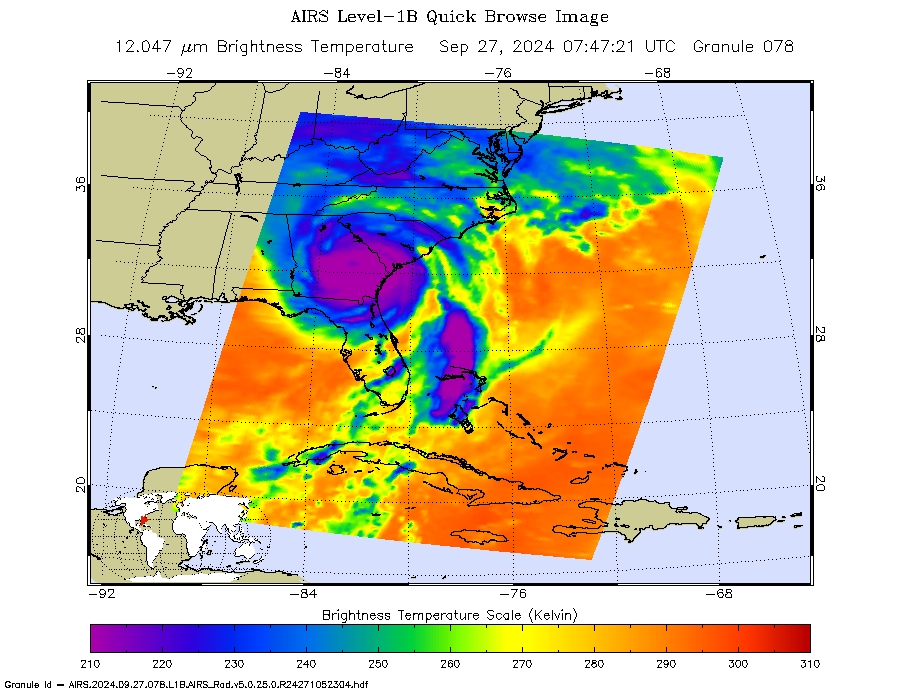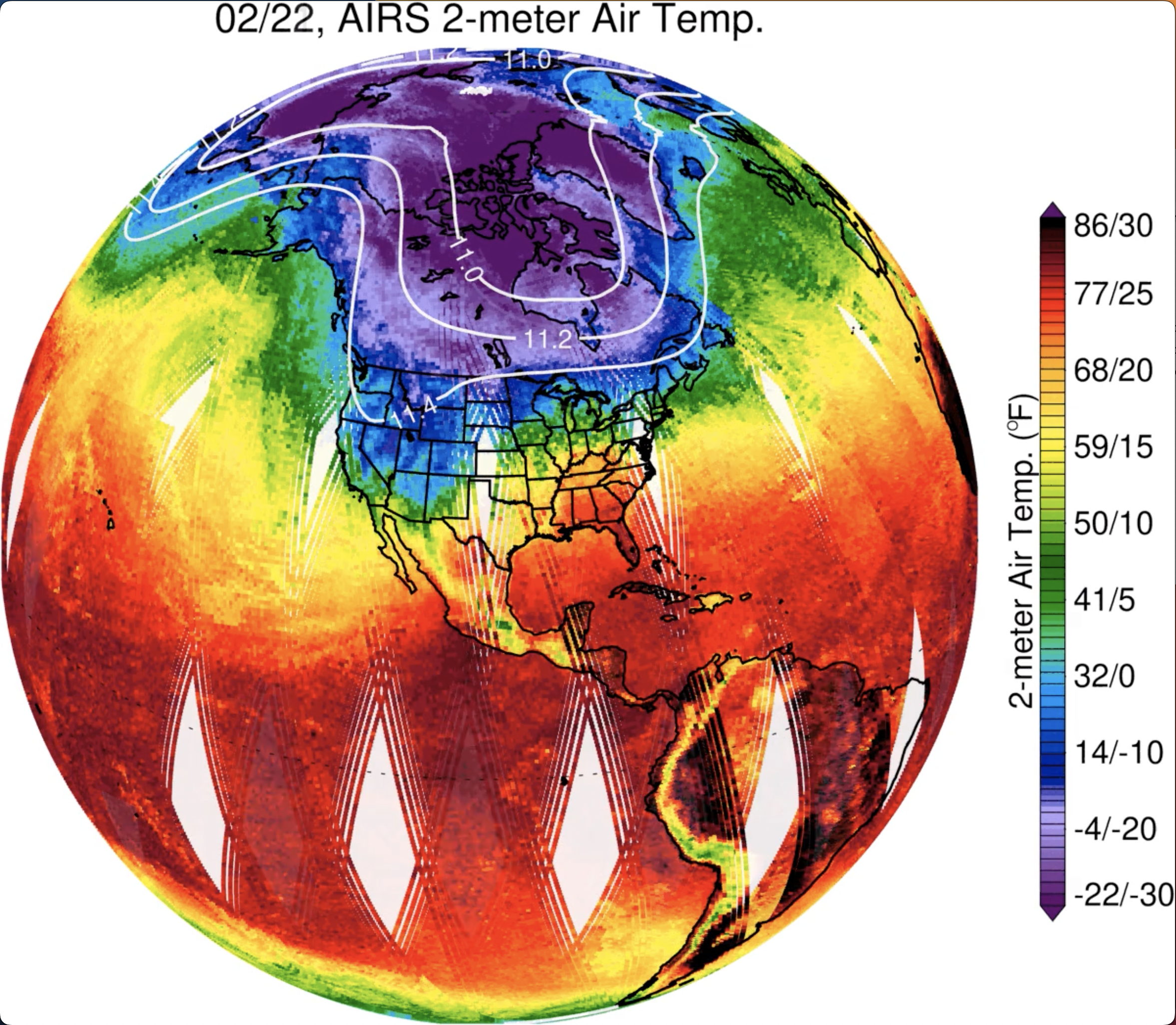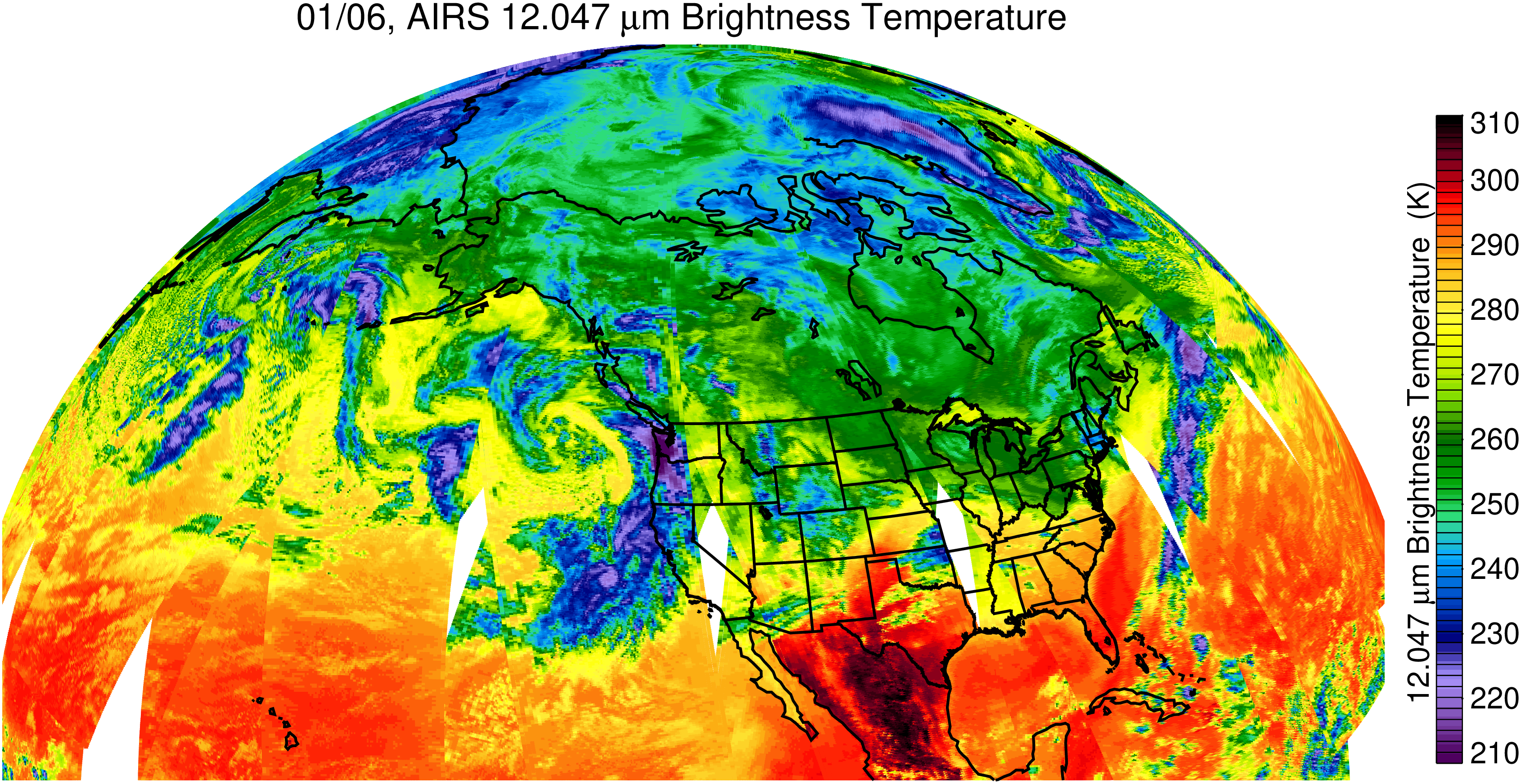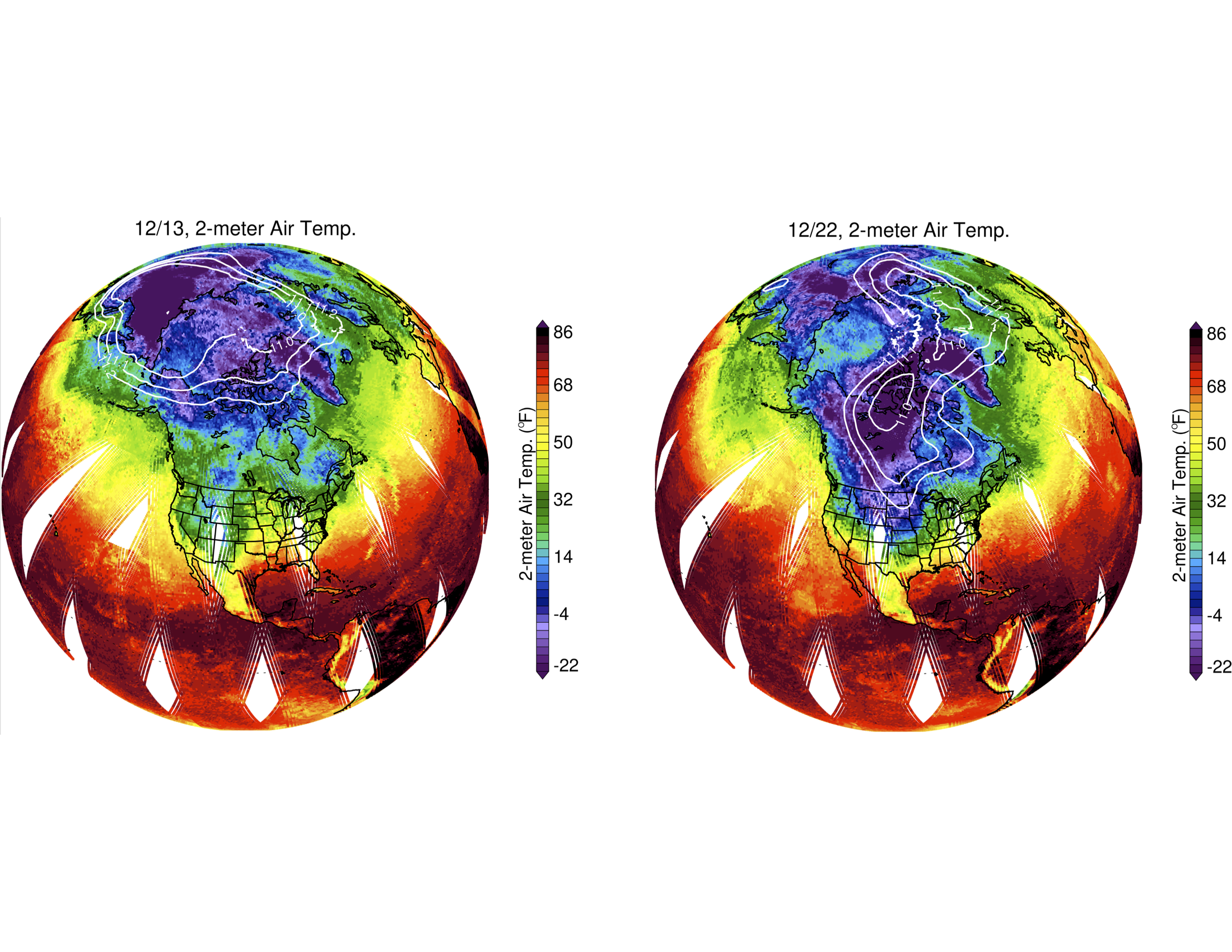News | June 10, 2006
It All Comes Down To Models

The eastward movement of the "dry" phase of the Madden-Julian Oscillation across the equatorial Indian and western Pacific Oceans is shown in these plots of atmospheric water vapor superimposed over rainfall data. Image credit: NASA/JPL
Weather describes the state of the environment in the near term, while climate describes the type of weather a region typically has. Predicting the weather is different than predicting climate change. Using the power of supercomputers, scientists have been able to create models of Earth's atmosphere that can be used to make forecasts.
Models used to predict the weather are designed to simulate the state of the atmosphere. Weather prediction models read in atmospheric data and are then "played" forward in time from the initial conditions - obeying certain rules that govern atmospheric dynamics. Accurate predictions from these models are usually limited from 5 to 7 days.
Atmospheric climate models are designed to operate over larger time scales to look at the trends of long-term changes. These models take into account the energy transport between the land, oceans and atmosphere, and depend heavily on the concentrations of water vapor and trace gases in the atmosphere. The trace gases regulate the amount of heat that flows from the earth to space keeping our planet warm in a blanket of air.
As the concentrations of these gases increase, more heat is trapped in, which can contribute to warming. Climate models depend on measurements of water vapor and trace gases. Historically, most of these observations were made from Earth's surface since satellites lacked the resolution, accuracy and stability to measure these gases. AIRS, with its ability to make very accurate measurements, will make important contributions to the body of knowledge about these gases.
AIRS will improve the accuracy of global climate models, hopefully reducing the discrepancies amongst results from different scientists, and reducing the degree of controversy about global climate change.






